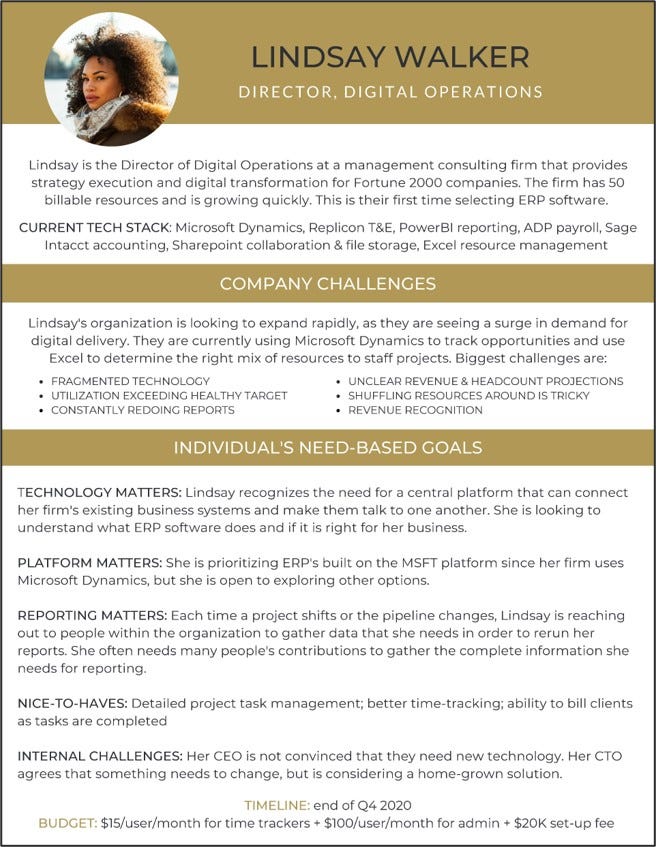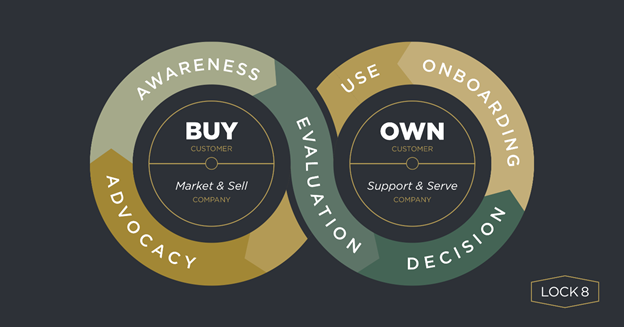The television series Undercover Boss has been a guilty pleasure of mine for years. Now entering its eleventh season, the show features “high-level corporate execs (who) leave the comfort of their offices and secretly take low-level jobs within their companies to find out how things really work and what their employees truly think of them.” For cringe-worthy viewing, this one totally hits home for me.
But I also like the show’s more serious theme of “walking a mile in someone else’s shoes” in order to deeply understand that person’s experience. At Lock 8, we’ve adapted this concept to help provide insight into a key focus area for small-scale SaaS businesses. Whereas Undercover Boss leverages this approach to offer candid employee-level views into the internal workings of companies, we hope to shine a light on the experience a customer has when evaluating, selecting, and adopting a B2B software solution.
On the surface, this is a straightforward endeavor, involving a few simple steps:
Simple enough, right? Not really. Like so many things, this is easy to do poorly, and extremely difficult to do well. To help make it easier, this post will share a few tips relating to each of these deceptively challenging steps.
1. Pretend You Are a Prospect: At its most basic level, this is a role-playing exercise, so it’s absolutely critical to play your role well. This may be relatively easy for the undercover bosses referenced above (they get a cover legend and a disguise; and they go), but it is more complicated to get inside the mind(s) of a purchasing committee for a large and complex corporate enterprise. We’ve learned that it is definitely worth investing the time and effort to make it real: have a dossier, real personas, real business problems you’re solving for, deadlines, budget constraints, and even political motivations. Even go so far as to designate a few people to play different decision-maker roles. Balance the company profiles to reflect your current (vertical) targets, your buyer personas spectrum and the maturity of organization using your solution. Marketing absolutely should help develop these resources. Here’s a snapshot of just part of a dossier created by a portfolio company that recently executed such an initiative.

An additional point about this step: BE OPEN! Unlike the undercover bosses, for whom secrecy is paramount, this should NOT be a clandestine endeavor. The reality in software companies is that everyone somehow touches the customer experience. Likewise, our experience is that people in early-stage SaaS business are all operating in good faith, so there is no need to trick anyone or attempt to trip them up. Rather, everyone needs to know you’re undertaking such a journey; and each functional area needs to be part of the process. Now…you may need to make the case: why it’s important; why we need to get it right; who’s involved; what we’ll be doing; how we’ll share feedback. But these are all further arguments for doing this out in the open. Equally important: everyone at the company should hear later what was discovered, and to view the information as a learning opportunity, not a judgement. Nothing makes people more nervous than being excluded from understanding what’s happening behind the scenes or feeling like this is a test.
2. Go Through the Steps: Uh…what steps? Whereas most businesses have established a sales process with related stages and activities, these usually assume a company-centric approach, and overwhelmingly ignore the customer perspective. Customers’ motivations / activities / dynamics are effectively infinite, so identifying their purchasing steps can be paralyzingly complex. To simplify, we like to organize our efforts around “major stages” of the customer’s lifespan with a software solution. Although every product / system / technology is unique, there is a relatively small number of macro-phases on the customer journey; and these are generally consistent across different solutions. The purpose of the mental model and accompanying graphic below is to align perspectives, offer a shared vocabulary, and provide structure to the exercise.

On the principle that a picture is worth a thousand words, I’ll hope this graphic is self-explanatory. In summary, as we engage in countless customer “buying” and “owning” activities, and we organize them into these six phases: (1) awareness, (2) evaluation, (3) decision, (4) on-boarding, (5) use, and (6) advocacy. One note of caution: for complex solutions, this may end up being a grueling multi-month process. It’s important to know what you are signing up for in advance…and what your customers are going through to buy / use your products.
3. Record Your Experiences: A disciplined collection of notes will generate consistency of insight and evaluation. With more than one person involved the experience, it’s important to provide a consistent way to gather intel and feedback. That said, this doesn’t require over-thinking; and a simple note template suffices. We like an “Experience and Expectation” framework (“what did I expect?” and “what did I experience?”) to structure things. Then, just codify the experience in a linear way — capture in detail and in chronological order what happened and how it impacted the buying / owning processes outlined above.
4. Articulate the Ideal: It’s nearly impossible to simply dream up the ideal client experience, just like it is unheard of to nail product-market-fit on version 1.0 of a solution. Instead, it pays to inspect and adapt. Thankfully, the early steps of this exercise, and the current-state baseline they provide, offer an awesome foundation from which to iterate toward a vastly enhanced client experience. As a result, this step can be as simple as revisiting every step along the journey and answering the following question: “what would have made this much better?” In the best case, this can lead to a wholesale re-thinking of the journey; at a minimum, it will radically improve the existing steps of the experience.
5. Identify gaps; build a plan: For the activators in the crowd, this is the payoff where you can begin to implement necessary improvements. But be careful about succumbing to temptation. It is alluring to focus energy on an ad hoc basis to address the low hanging fruit that can be fixed easily. The problem is that this approach can break any number of existing processes that — although they may be sub-optimal — generally work today in the context of the current approach. So be careful about what you choose to “fix” as a one-off — it could just break other areas of your process. Although it requires more patience and offers delayed gratification, an orchestrated program overhaul will undoubtedly yield more substantive improvement of the overall client experience. Make a plan and take your time in executing it. Our experience is that the “customer experience re-engineering” project to come out of this exercise may take months or even years to implement.
As with most pressing, cross-company business issues, initiatives like creating an awesome CX Journey can take on a life of their own. Proceed with caution here; ensure that anything and everything you chose to do ties back to your overarching business needs. Such an effort must involve more than just the bosses; and there is no need to go undercover — doing so will allow companies to walk in their customers’ shoes…a journey well worth taking.